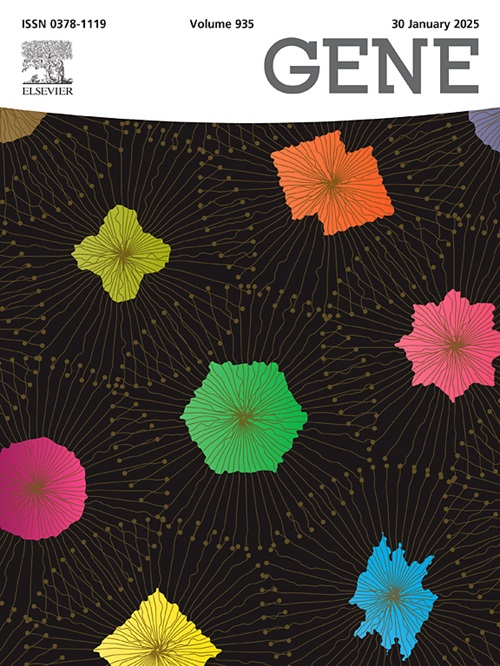Whole exome sequencing study of families with single atrium and/or single ventricle identifies de novo mutations in CORIN and TTLL10 as potential pathogenic genes
IF 2.4
3区 生物学
Q2 GENETICS & HEREDITY
引用次数: 0
Abstract
Background
Single atrium and/or single ventricle (SA and/or SV) are severe congenital heart malformations linked to gene mutations, though the underlying genetic mechanisms remain unclear. This study seeks to elucidate these mechanisms. Methods: Trio-whole exome sequencing (trio-WES) was performed to identify de novo mutations in 36 familial SA/SV cases. Identified genes were analyzed using Gene Ontology (GO), KEGG pathways, and protein–protein interaction (PPI) analyses. Pathogenicity predictions were performed using established databases, and key de novo mutations were validated via Sanger sequencing. Zebrafish morpholino (MO) knockdown experiments were utilized to assess the functional impact of candidate genes.
Results
Trio-WES analysis identified 183 candidate genes harboring de novo single nucleotide variants (SNVs), with 24 genes linked to congenital heart disease (CHD) and enriched in the heart morphogenesis signaling pathway. Screening through a deleterious variants database revealed ten de novo SNVs, eight of which were confirmed by Sanger sequencing. Subsequent screening using mouse, zebrafish, and cardiac single-cell databases highlighted two genes: CORIN and TTLL10. Zebrafish knockdown experiments showed cardiac defects and altered heart rate, supporting their involvement in SA/SV development.
Conclusions
Our findings suggest that mutations in de novo genes play a critical role in cardiac development, offering insights into SA/SV mechanisms and potential diagnostic targets.
对单心房和/或单心室家族的全外显子组测序研究发现,CORIN和TTLL10的新生突变是潜在的致病基因。
背景:单心房和/或单心室(SA和/或SV)是与基因突变相关的严重先天性心脏畸形,尽管潜在的遗传机制尚不清楚。本研究旨在阐明这些机制。方法:对36例家族性SA/SV病例进行三全外显子组测序(trio-WES)鉴定新生突变。利用基因本体(GO)、KEGG通路和蛋白相互作用(PPI)分析鉴定出的基因。使用已建立的数据库进行致病性预测,并通过Sanger测序验证关键的新生突变。利用斑马鱼morpholino (MO)敲低实验来评估候选基因对功能的影响。结果:Trio-WES分析鉴定出183个携带新生单核苷酸变异(SNVs)的候选基因,其中24个基因与先天性心脏病(CHD)相关,并在心脏形态发生信号通路中富集。通过有害变异数据库的筛选发现了10个新生snv,其中8个通过Sanger测序证实。随后使用小鼠、斑马鱼和心脏单细胞数据库进行筛选,突出了两个基因:CORIN和TTLL10。斑马鱼基因敲低实验显示心脏缺陷和心率改变,支持它们参与SA/SV的发展。结论:我们的研究结果表明,新生基因突变在心脏发育中起着关键作用,为SA/SV机制和潜在的诊断靶点提供了见解。
本文章由计算机程序翻译,如有差异,请以英文原文为准。
求助全文
约1分钟内获得全文
求助全文
来源期刊

Gene
生物-遗传学
CiteScore
6.10
自引率
2.90%
发文量
718
审稿时长
42 days
期刊介绍:
Gene publishes papers that focus on the regulation, expression, function and evolution of genes in all biological contexts, including all prokaryotic and eukaryotic organisms, as well as viruses.
 求助内容:
求助内容: 应助结果提醒方式:
应助结果提醒方式:


